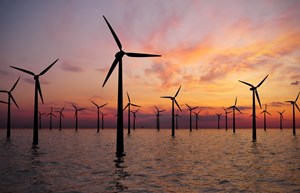bp, Equinor part ways on U.S. offshore wind project as industry finds it footing
(Bloomberg) – bp and Equinor are parting ways in the U.S. offshore wind market.
The companies are 50-50 partners in two projects off the New York coast, but under a transaction announced Thursday they will each assume full control of one of the planned wind farms. The London-based oil major will take a pre-tax impairment charge of around $600 million, while Equinor expects a combined loss of around $200 million.
The U.S. offshore wind industry was battered last year by rising costs that prompted developers to delay or cancel multiple projects. The joint venture between the two energy giants was formed as the U.S. market was newer and riskier, and this transaction is a sign that industry uncertainty is waning, according to Timothy Fox, an analyst at ClearView Energy Partners.
“Now that there’s really strong policy driving offshore wind, the long-term risk that encouraged them to do it together is no longer there,” he said.
Under the deal, bp will take Equinor’s 50% stake in the Beacon Wind project, and Equinor in turn will get bp’s 50% share in the Empire Wind development.
The transaction also has the two companies swapping ownership of onshore assets in New York City. Equinor gets full ownership of the South Brooklyn Marine Terminal lease and bp will take over the Astoria Gateway for Renewable Energy.
Still, the charges reflect the challenges in the emerging U.S. market. The swap is the latest development in what has proved to be a problematic project for bp. Several analysts and investors have expressed concern that it overpaid for the assets when it first bought the stake from Equinor for $1.1 billion in 2020.
Since then, soaring costs and rising interest rates have added to woes in the US offshore wind industry, with BP’s own head of gas and low-carbon energy saying it was “fundamentally broken.” In November, bp’s Anja-Isabel Dotzenrath said that a “fundamental reset” was needed but that issues could be fixed.
Offshore wind in the U.S. has faced a difficult path recently. Many projects are in jeopardy as developers have been forced to recalculate the figures for proposals originally modeled years ago, with some delayed or even canceled. On the other hand, the first two big wind farms, Vineyard Wind off the coast of Massachusetts and South Fork Wind off the coast of New York, successfully begun sending electricity ashore in recent months.



